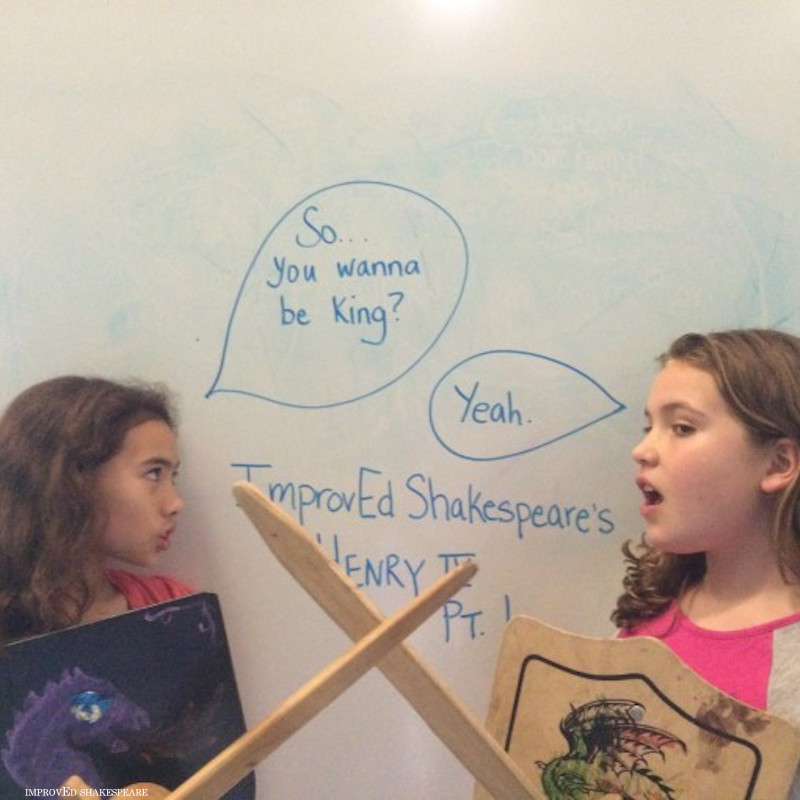Fun Facts About Sports in the Renaissance
by Prince Ferdinand
Sports in the Renaissance were very different from what we have today. The four sports on which I want to focus on are football, archery, jousting, and bowling.
First up, football. Now, you may think you know football, but it has changed a lot since the Renaissance. Similar to American football, it was called “dumb ball” and consisted of throwing a ball made of a pig’s bladder between two markers. In fact, it was so chaotic that in the 1300s, King Edward III banned it! This was not only because it took up too much of the young men’s time, but also, due to the fact that there were no referees, and therefore no one to stop the losing team from pulling a dagger on the other. So, if you win, you had better plan to run home as fast as you can.
If you think that’s violent, try this on for size! One of everyone’s favorite sports back then was jousting, a sport where you charge each other with pointed lances. But to them, jousting was as chivalrous as it gets! In a joust, the two jousters first charge back and forth at each other with lances. Once a knight had been unseated, you would fight man-to-man with swords, until someone surrenders. It was customary for a knight in the tournament to select a woman of noble birth to be his sponsor. If he won the event, he could be assured of favorable attention from the lady. Although, of course, there’s always the chance you could die in a joust, which is something I don’t like to think about.
[the_ad id=”4426″]
Games And More Games
But both those game were just for fun. Archery, on the other hand… it was a law that if you were a lower-class man, you had to practice archery. The places where you could practice archery were called “the butts.” The point in an archery contest was to shoot your arrow closest to the middle ring. In the 14th century, longbows became the English army’s most important weapon. There were three different types of archery:
- Butt shooting, the ancestor of Olympic target archery;
- Clout shooting, where you aimed at a piece of canvas about 18 inches long. In it, you shot the arrow up high, and it fell straight down on the canvas;
- Roving, the predecessor of modern field archery. In it, archers were presented with targets of different sizes simulating small animals.
One of the most different games back then was bowling. It started as a game that included a heavy ball, but no pins! Instead, you would stand in a circle and roll the ball at each other. The winner was the last person standing. Later, a less aggressive variant of the game arose called feather bowling, in which players rolled their balls at a feather stuck upright in the ground. Yet another variant of the game is lawn bowling or “bowls.” You play by trying to roll a ball closer to a smaller ball than your opponents… in other words, a lot like bocce ball.
And that sums it up, from football to bowling with jousting and archery in between.
[the_ad id=”4426″]
SHAKESPEARE FOR ALL
Working with Shakespeare in education frightens many. Because Shakespeare experts, including professionals, surround us. Escaping them is difficult. This can be intimidating. Thus, feelings of dread usually accompany the act of presenting, but moreover be introduced to, the Bard.
For this reason, ImprovEd Shakespeare is here to help. Founder and Director, Andee Kinzy, offers the layman’s approach to Shakespeare.
[the_ad id=”4426″]
SHAKESPEARE FOR TEACHERS AND DIRECTORS
If you’re an English teacher, a theatre director, or a well-trained Shakespeare advocate, here you will find inspiration, as well as techniques, for making our favorite bard fun for Kids. Accordingly, we present old, new and improved ideas for introducing Shakespeare to youth for the non-Shakespeare-academic. Among them, we include theatre games, improvisation, tips, tricks, plus activities for using Shakespeare in education.
SHAKESPEARE FOR KIDS
Since 2011, ImprovEd Shakespeare has been exploring the Bard with youth through theatrical performance. Our signature scripts are a mix of modern narration plus original Shakespeare verse. With a focus on the story, including an abbreviated script length, our productions entertain all ages. Moreover, our catalog goes beyond the oft-used Midsummer Night’s Dream, or Romeo and Juliet. We’ve discovered that young people find much to their delight among many of Shakespeare’s works. Consider subscribing to our YouTube channel for family-friendly Shakespeare videos.
PERFORMANCES
Each fall and spring, ImprovEd Shakespeare develops a new production for live performance. In honor of the traditional Renaissance traveling troupe, during a period of a few weeks, we present Kid-friendly plays at various venues around town. Our Players, between 3rd-11th grade, gear themselves with playful, as well as engaging interpretations of works by the Bard of Avon. Suitable for all ages, each performance runs for about an hour.
Furthermore, these shows are always FREE. However, we gladly accept Donations! Additionally, visit ImprovEd Shakespeare, Shakespeare for Kids by Kids on Facebook, Instagram, & Twitter. And don’t forget to click on our BLOG for the stories behind these videos.





Great article it was very entertaining